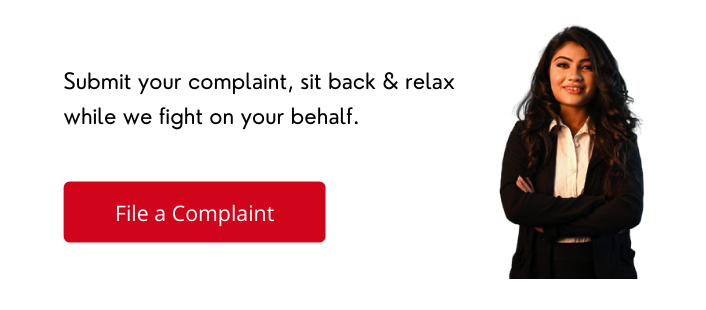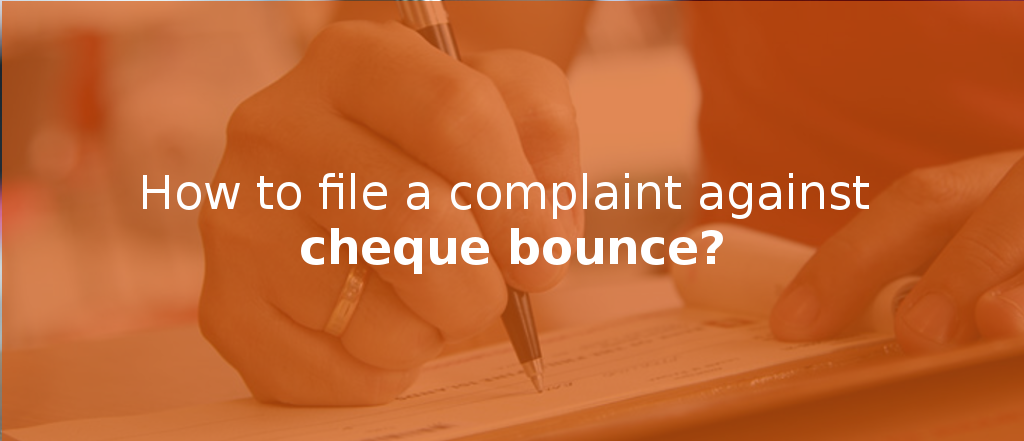Table of Contents
- What is a cheque?
- Characteristics of a cheque
- Depositing vs Cashing a Cheque
- What is a cheque bounce?
- Common reasons for cheque bounce
- What happens when a cheque gets bounced?
- How to file a complaint against cheque bounce?
- FAQs
What is a cheque?
Various modes of payment exist in the present generation. From UPI to net banking, digitisation has ruled them all. Due to restrictions on online transactions up to a certain amount, people use offline methods. The frequently used one for a higher transfer of money is the cheque. It is a mode of payment, particularly a bill of a certain amount, generated by a particular individual to an applicant who demands the amount.
Three parties get involved in total when a cheque has to be issued by the giver for their client:
Drawer – He creates the cheque and is the account holder from which the amount gets deducted.
Drawee – It is the bank where the cheque holder’s account resides. The cheque has to be issued by a specific bank always.
Payee – He is the person/organisation to whom the check has to be issued. If the cheque is a transfer type, then the drawee and the payee can be the same.
Characteristics of a cheque
- The cheque must have a clear signature of the drawer.
- The cheque comes in handy when payable is on-demand.
- The cheque must be of some certain amount of money.
- The cheque must specify the bank.
- The cheque must be in the name of a particular person/organisation.
- The cheque must be in writing.
- The cheque must contain an unconditional order.
Depositing vs Cashing a Cheque
Cashing – One receives the money from the bank when the cheque passes successfully. All you need to do is deposit the cheque at the correct branch of the bank, get the money and spend it accordingly without any limits.
Depositing – It is the process of adding a balance to your account. This process can take up to 24-48 hours for the amount to credit to your bank account.
What is a cheque bounce?
An unpaid cheque returned by the bank to the drawer is a bounced cheque, also called a dishonour of cheque. Many reasons can cause this problem, like insufficient bank balance for a cheque to sanction successfully. The drawee bank returns the failed cheque with a proper memo as soon as the trouble starts.
Common reasons for cheque bounce
- Wrong date of the cheque
- Irregular signatures
- Expired cheque
- Insufficient funds
- Damaged cheque
- The request of stopping the payment
- Overwriting on the cheque
- The amount in words and numbers does not match
- The drawer account is frozen
- The drawer account is closed
- Conflicting cheque number
- Has only one signature when the drawer is a joint account
- The cheque requires any alteration
- The drawer dies
- The drawer becomes insane
- The drawer becomes insolvent
- Is a crossed cheque
- Bank doubts the validity of the cheque
- The cheque issued is against the rules of the trust
- Amount mentioned crosses the limit of the cheque overdraft
- Drawee gives the cheque to the wrong branch of the bank
What happens when a cheque gets bounced?
The bank returns the bounced cheque with a memo to the payee, informing the problems that occurred with the cheque. The payee can resubmit the cheque after solving the issues raised by the bank. If the bank rejects the cheque a second time too, then the payee can suffer these consequences:
- A penalty by the bank
- Damage to the credit history
- Filing of criminal & civil charges by the payee
- Future cheques may face rejection by the bank because of your faulty credit history
How to file a complaint against cheque bounce?
Follow the steps given to file a bounced cheque case:
Step 1:- Send a demand notice.
There is a possibility that the bank may return the bounced cheque. In that case, one must send a notice to the drawer within 30 days after receiving the returned cheque. One can take the help of a lawyer to do so. Legal actions take place within a decided period (usually 15 days) if the notice does not demand the amount from the drawer.
The payee can send the complaint by themselves, but one must take the help of a lawyer for such financial issues.
Step 2:- Needed information has to be stated clearly in the notice
Statement of debt or legally enforceable liability
Demanding the drawer to pay the amount within 15 days
A statement regarding the cheque has to be presented within its period of validity
Information about the dishonour of the cheque as per the bank
Step 3:- Draft the complaint
If the drawer ignores your notice or has refused to pay your sum within 15 days, you can legally file a complaint against them. You can file a complaint when any of the following incidents occur:
- The cheque was presented.
- The cheque was issued.
- The cheque was rejected by the bank.
- A demand notice was given by you to the drawer.
You must have these documents with you to file a complaint:
- Complaint letter
- Oath letter
- Photocopy of all the documents like cheque, memo, acknowledgement receipts and notice copy.
FAQs
How much money do I need to give to file a case?
The complainant needs to pay the court fees for filing a complaint that depends on the bounced cheque’s amount. The fee catalogue is as follows:
- ₹0 to ₹50000 ₹200
- ₹50000 to ₹200000 ₹500
- Above ₹200000 ₹1000
When does a court send notice to the accused?
After the complaint is filed successfully, the court summons the drawer who fails to pay the demanded money.
What is the relevant evidence in a cheque bounce case?
- Cheque
- Cheque return memo
- Record of sending a demand notice to the drawer
- Any other document proving the obligations of the bounced cheque
What is the penalty and punishment for an accused in a cheque bounce case?
A penalty in the form of money is imposed on the drawer if he is found guilty. The amount can be double the bounced cheque. Or, the culprit can also get imprisonment for up to two years.
What is the importance of Memo of Advocate (MoA) in a court procedure?
- After filing the case, all documents are re-checked by the Judicial Magistrate First Class, so all the original documents are required.
- The period of filing a complaint is also checked at this stage.
- Bhatta or the process form is filed along with the address of the accused.
- The court orders the drawer to appear in the court on a specified date.
- Failing to appear on the given, the court can issue a bailable warrant, if requested by the complainant.
- If the accused still refuses to present themselves in court, the court can issue a non-bailable warrant against the accused.
How to file a complaint in a civil suit?
A civil suit can help the payee recover the stuck amount and the amount paid during the litigation. A summary suit under Order- 37 of the Code of Civil Procedure, 1908 can be used to recover the due amount.
What happens when a cheque bounce issue does not resolve?
There are over 40 lakh pending cases as per the reports of the Supreme Court of India. These financial offences are way more common than they should be and play a crucial role in directly affecting our country’s financial ecosystem. There can be many consequences related to this crime. From a heavy penalty to imprisonment, many such punishments are served to those proven guilty of charges.
If the drawee fails to take any legal action against the drawer in the given time limit, the drawee will lose their power to exercise the remedies aided by the court. Therefore, the drawee must tackle a bounced case if they do not wish to lose their hard-earned money.
Exceptions
All the legal remedies have to be provided, only when the pending debt gets successfully cleared. Hence, if the dishonoured cheque gets issued as a gift or donation, the payee cannot legally sue the drawer.
Key points to remember
- The Magistrate may let off the delay of filing a complaint relating to a bounced cheque after the expiry of 30 days only if the reasons for the delay are legitimate.
- The dishonour of cheque due to the stoppage of the payment is covered under section- 138.
- The time limit under the legal notice is not increased at any cost for the drawer (accused).
- The limitation period is three months from the date when the cheque gets issued by the drawer.


